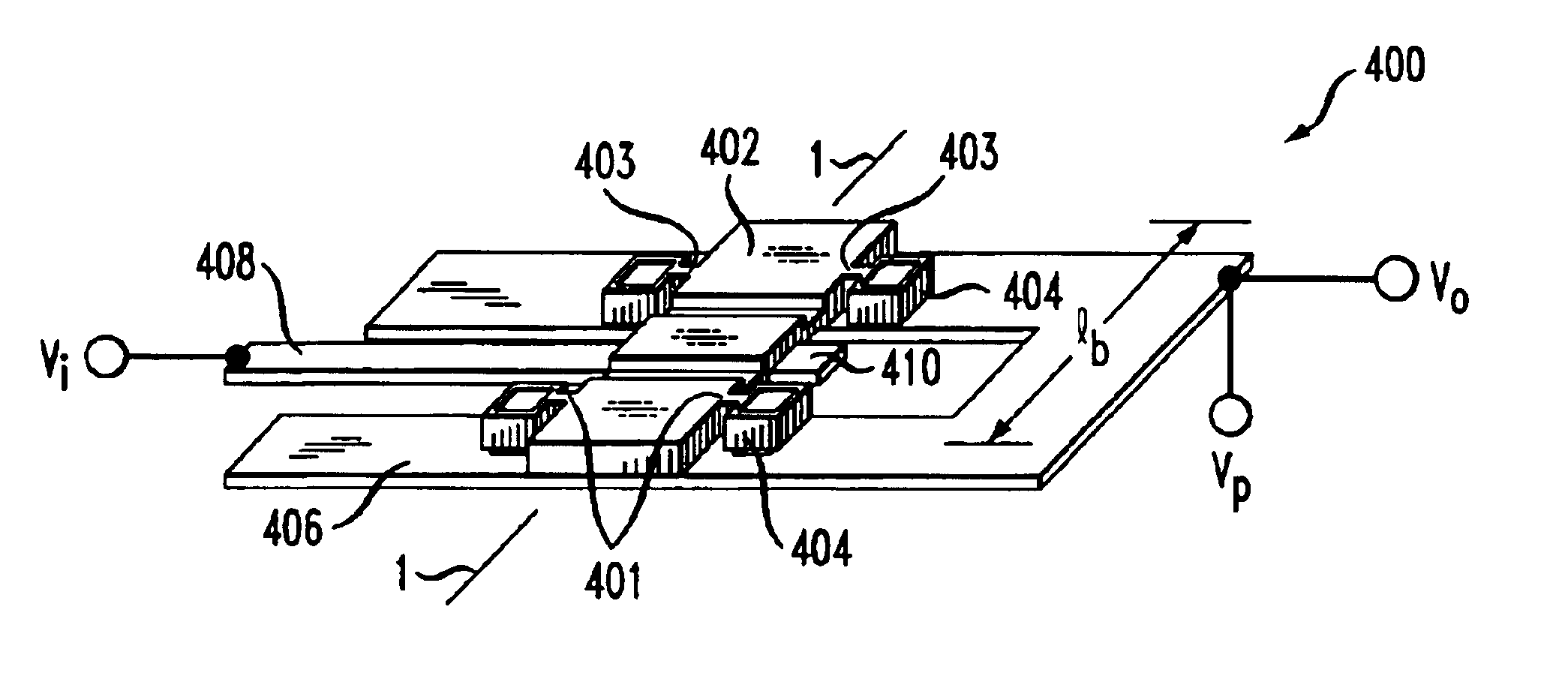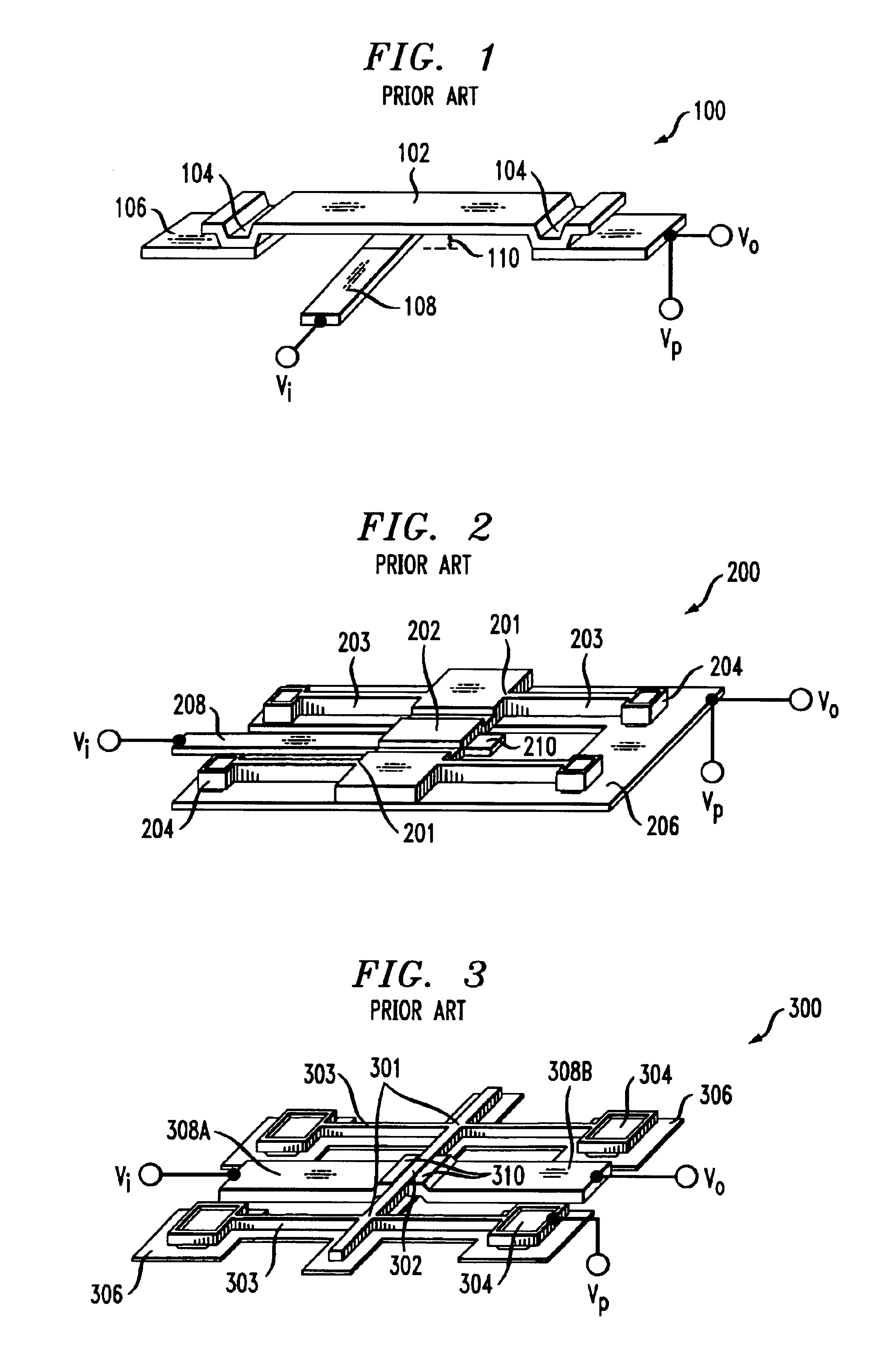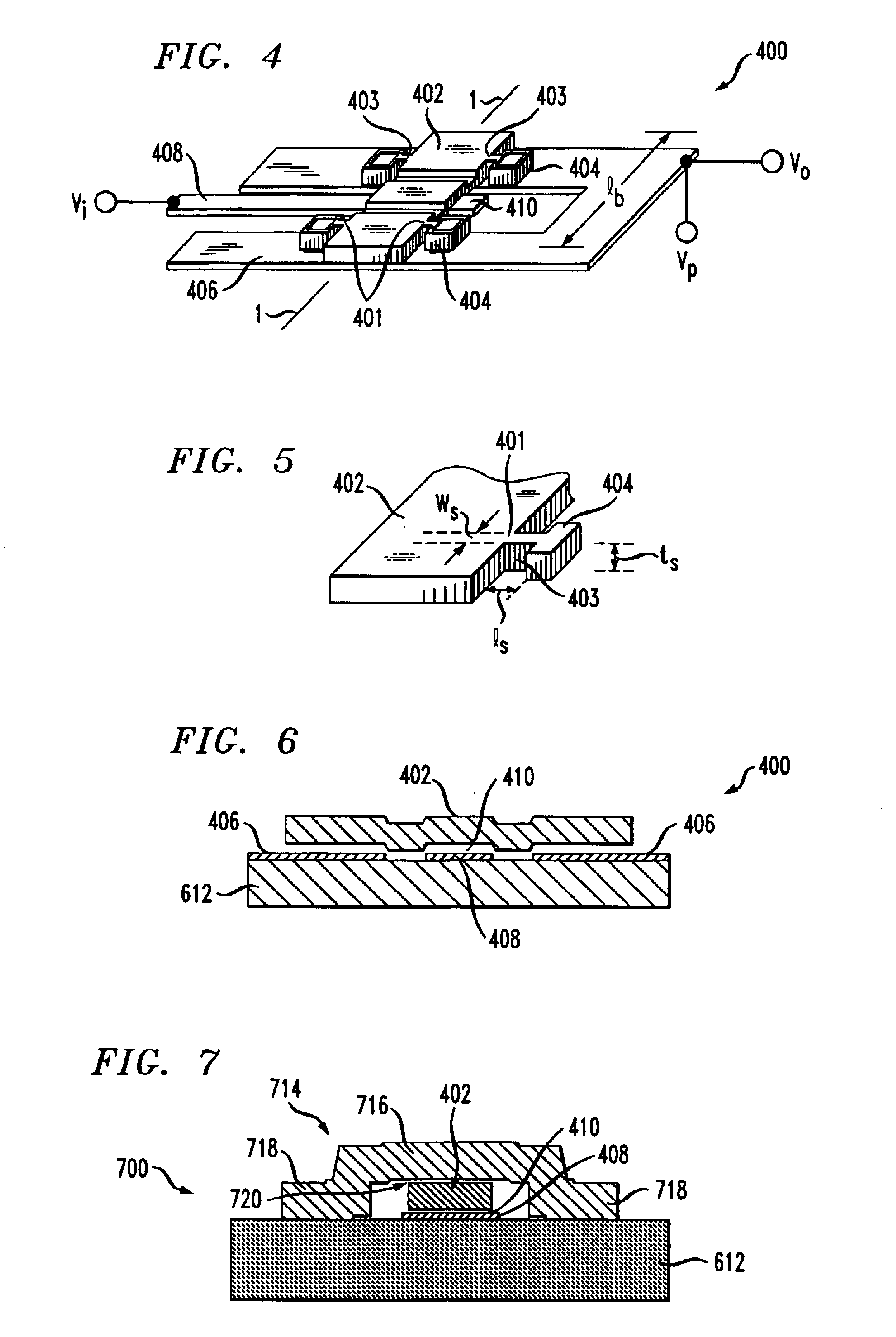Micromechanical resonator having short support beams
a micromechanical and support beam technology, applied in the direction of device details, device material selection, piezoelectric/electrostrictive device details, etc., can solve the problems of limited use of clamped-clamped resonators, inability to maintain a suitably high quality factor, and not to operate at the same frequency. , to achieve the effect of increasing the resonant frequency, increasing the temperature, and decreasing the electrical stiffness of the resonator
- Summary
- Abstract
- Description
- Claims
- Application Information
AI Technical Summary
Benefits of technology
Problems solved by technology
Method used
Image
Examples
Embodiment Construction
[0059]The following references provide information that can be used in the design and fabrication of the illustrative embodiments of the present invention. Each of these references is incorporated herein in their entirety:[0060]U.S. Pat. Nos. 6,249,073 B1, 6,169,321, and 5,976,994.[0061]Publ. U.S. Pat. Apps. US 2002 / 0070816 A1 and US 2003 / 0051550 A1.[0062]Nguyen et al., “Micromachined Devices for Wireless Telecommunications,”Proc. IEEE, v.(86), no.8, pp. 1756-1768 (August 1998).[0063]Wang et al., “VHF Free-Free Beam High-Q Micromechanical Resonators,”Technical Dig., Int'l IEEE Micro Electro Mechanical Systems Conf., Orlando, Fla., pp. 453-458 (Jan. 17-21, 1999).[0064]Nguyen et al., “Frequency-Selective MEMS for Miniaturized Low-Power Communication Device,”IEEE Trans. Microwave Theory Tech., v(47), no.8, pp. 1486-1503 (August 1999).[0065]Bannon et al., “High Frequency Micromechanical Filters,”IEEE J. Solid-State Cir., v(35), n. 4, pp. 512-526 (April 2000).[0066]Nguyen et al., “Transc...
PUM
 Login to View More
Login to View More Abstract
Description
Claims
Application Information
 Login to View More
Login to View More - R&D
- Intellectual Property
- Life Sciences
- Materials
- Tech Scout
- Unparalleled Data Quality
- Higher Quality Content
- 60% Fewer Hallucinations
Browse by: Latest US Patents, China's latest patents, Technical Efficacy Thesaurus, Application Domain, Technology Topic, Popular Technical Reports.
© 2025 PatSnap. All rights reserved.Legal|Privacy policy|Modern Slavery Act Transparency Statement|Sitemap|About US| Contact US: help@patsnap.com



